A Visit with Stephen Alcorn: For the Love of Drawing
 November 24th, 2015 by jules
November 24th, 2015 by jules
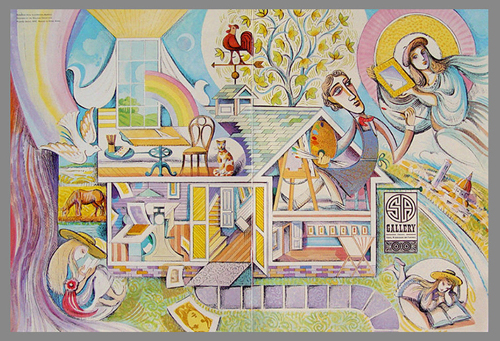
Pictured above is an image from illustrator and printmaker Stephen Alcorn. It is an allegorical image depicting Alcorn and his wife and two daughters in and around their New York home and studio. Alcorn’s other home, his childhood one, was one that included his father — artist, designer, and children’s book illustrator John Alcorn, who died in 1992. (There’s more information here at 7-Imp about John and his work.)
Stephen is visiting 7-Imp once again today, in an in-his-own-words type of piece, to talk about his work and, specifically, the teaching he’s been doing in beautiful Florence, Italy. Stephen is a professor at Virginia Commonwealth University/School of the Arts. Florence is also where he spent his formative years.
Let’s get right to it. …
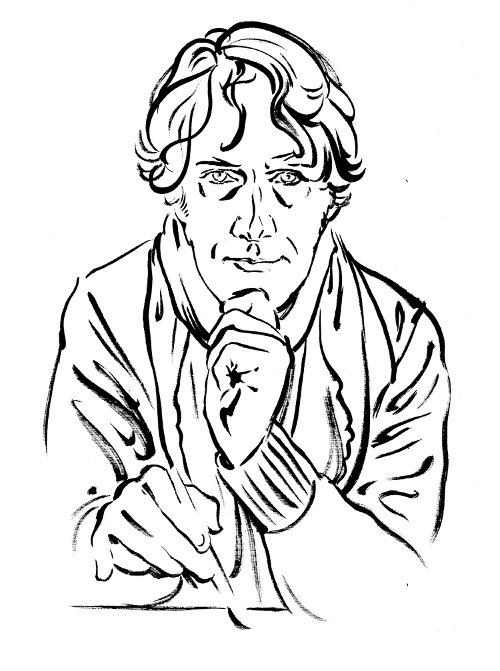
My entire life has revolved around the cultivation and celebration of the visual arts. As the son of designer and illustrator John Alcorn (1935-1992), I spent the better part of my childhood drawing alongside him in his various studios — a succession of work environments defined by a magical confluence of wit, humor, decorative charm, graphic elegance, and the power to transform something ordinary into something extraordinary. Although our artistic temperaments could not have been more different (my father considered himself essentially a designer and thought of me primarily as a painter and printmaker) our shared passion for the visual arts, and its history, enabled us to cultivate and enjoy a profoundly symbiotic relationship. Over the years, this bond would lead to a series of inspired collaborations. Now, looking back, I can trace the genesis of my lifelong fascination with the edifying power of the mark, and its ability to transform a blank surface into a revelatory image, to the time spent drawing alongside him as a child.
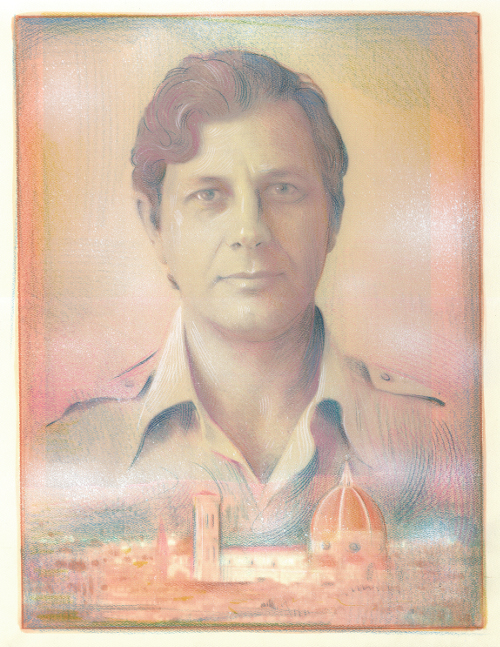
In 2010 I received the opportunity to teach full time at VCU/SOTA. Prior to this, I had been occasionally invited to teach (most noticeably at UConn at Storrs and at Skidmore College), but these engagements were semester-long visiting professorships. I found that I enjoy teaching immensely and that I relish the challenge of analyzing and articulating concisely and clearly the processes that I, as a draftsman, illustrator, printmaker, and designer, had developed and employed over the years—and which had become by this time instinctual and intuitive. This development in my professional life also expanded my creative practices. It also led to a rediscovery of the lessons I learned during my grade school years while attending the Istituto Statale d’Arte in Florence, Italy. The disciplines to which I was introduced—among them the history of art, printmaking (intaglio, lithography, and the relief-block print), painting, figure drawing, mechanical drawing, sculpture, philosophy, math, science, and sociology—instilled in me a profound respect for all things interdisciplinary. This has allowed me to adapt to an ever-changing world by cultivating a series of careers within a larger career. In turn, I find satisfaction in helping students to lay a broad foundation upon which they can build their futures and thus realize their potential in an ever-changing world.

Photo: Lucrezia Alcorn
I was fortunate to have come of age as an artist in a culture that fostered a holistic, humanistic approach to art education. When I was 12 years old, my family moved form the U.S. to Florence, Italy, where I enrolled in the Istituto Statale d’Arte. My first drawing instructor, the sculptor and painter Marco Lukolic, was a seminal influence for me. Like my father, he reveled in the eye-mind-hand coordination that makes drawing possible and fostered an appreciation for the art of translation, or those processes of thought and perception that permit an artist to transcend the prosaic and embrace the poetic. I have come to value work that is at once modern, ancient, sophisticated, and naïve — in short, that lends itself to being appreciated on multiple levels and ranges from the organic to the clinical and the imaginative to the literal. Perhaps most importantly, Professor Lukolic taught me to value tradition and recognize tradition, not as nostalgia but as knowledge passed from one generation to another. I am grateful that his example encouraged me to see my artistic development as a microcosm of the larger history of art with a sense of belonging to a larger whole.
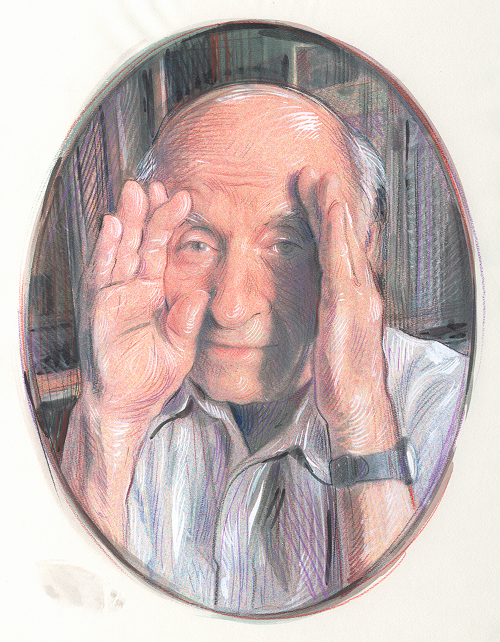
The challenges I have faced as a printmaker, illustrator, and painter over the years led me to work more and more from memory, and in a manner and style perhaps more indebted to the advent of synthetic cubism than to the figure drawing lessons of my youth, which revolved around the discovery and exploration of such extraordinary draftsmen as Pisanello, Watteau, Ingres, the youthful Degas, and Kollwitz. This distancing from the academic drawing practices of my youth was pushed further by my lifelong fascination with the relief-block print, a medium that imposes unforgiving constraints and necessitates a high degree of formal stylization.
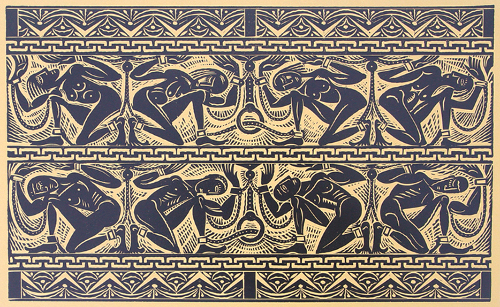
Still, I never completely abandoned the practice of drawing from life. Over the years, my work has come to embody a sort of dichotomy comprised of two complementary approaches to image-making: one inspired by anonymous Italian folk art of the 15th and 16th centuries and 18th- and 19th-century American folk art; and a second inspired by the aforementioned European tradition of master draftsmanship. My “Daily Drawing” series of mixed-media studies is a testament to my commitment to the practice of drawing remaining an integral part of my daily life. My most frequent subject has been my wife and muse—and fellow artist—Sabina. In addition, I religiously maintain a library of 11 x 14 sketchbooks, each one dedicated to a specify theme, e.g. one for figure drawing; one for portraiture; one for studies of objects, such as sea shells; one for studies of plant life; etc. I find that my daily practice of drawing directly from life in an honest, observational manner is not only refreshing and pleasurable, but that it has the added benefit of informing the varying degrees of stylization present in my published work. And that it helps me avoid lapsing into unduly reductive and formulaic solutions. Furthermore, the practice serves to generate a visual record of things seen and experienced, a visual diary that documents my daily observations and discoveries.
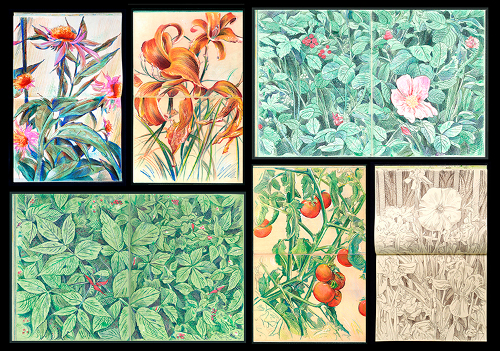

I also find that the coordinated activity of the eye, mind, and hand leads to an engagement that unifies body and soul. By restoring the haptic and the tactile to its rightful place in my daily existence, I am able to achieve a more mindful state of being. When I draw an object, I am drawn to wrap my mind around it. If the drawing is of something that does not exist in the material sense, it provides me with the gratification of generating a tangible subject from an abstract idea. In drawing, form and content are co-dependent, for one cannot exist without the other. Consequently, drawing unites ideas and physicality together through translation and distillation. Indeed, one of the virtues of drawing is the process of abstraction it demands. The process is immensely satisfying, precisely because it lends coherence to experience and, in so doing, order to chaos. (Or, it may do the inverse. With drawing, the possibilities truly are infinite.)
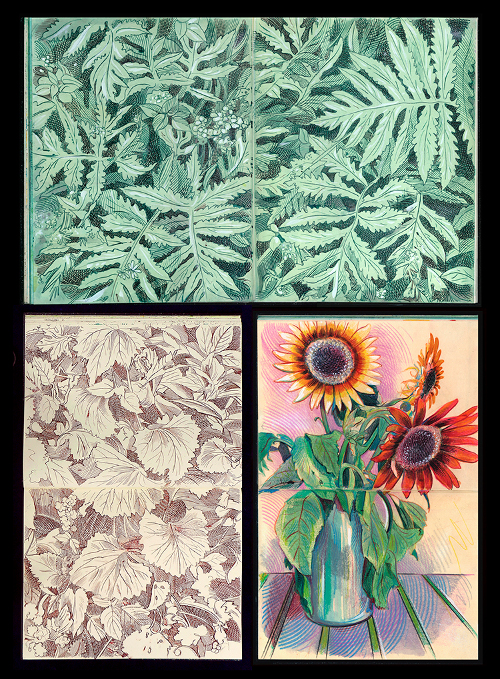
When we take the time to look, there is no limit to the secrets that drawing may unlock and reveal about how we think, look at the world, tell stories, and communicate with ourselves through the timeless language of pictures. In order to fully appreciate these attributes, we must first learn to read drawings, much the way we read a poem or a chapter in a book. Just as time is required to leave his/her marks on a given surface, time is required of the observer to study and fully absorb the implications of the marks made on a given surface. Regrettably, the fast pace of modern life, driven as it is by the quest for immediate gratification and time-saving expediency, discourages such acts of contemplation. But when the time is taken to permit a drawing to unfold incrementally before one’s eyes, the experience can be revelatory and permit the viewer to share in the creative process by following the different stages of a drawing: from the first tentative, underlying preparatory marks to the crowning, finishing touches. A sketchbook entry by Leonardo da Vinci is like a landscape with a history all its own, replete with peaks and valleys and battle scars. Upon close inspection, one can detect a confluence of tentatively drawn underlying marks, followed by a series of more committed marks; these in turn are followed by a series of reworkings, scrapings, and burnishings that reveal the pulse of life. Such hand-made drawings are a testament to the passage of time, a record of the trajectory by the artist’s train of thought, one that takes the viewer from one point to another in a tangible, though mysterious, way.
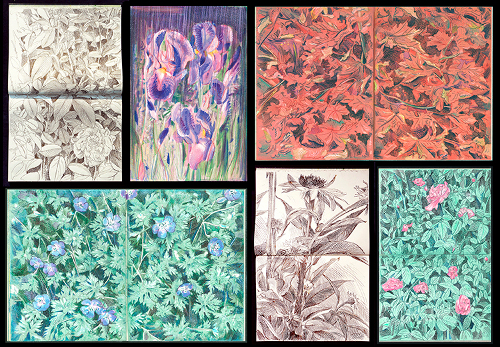
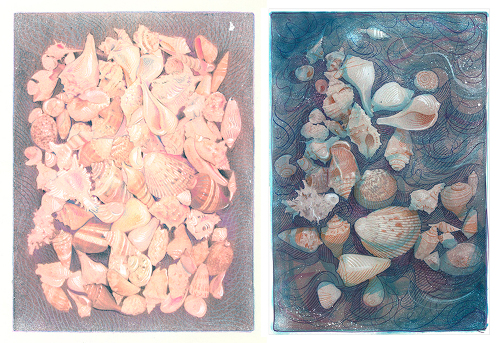
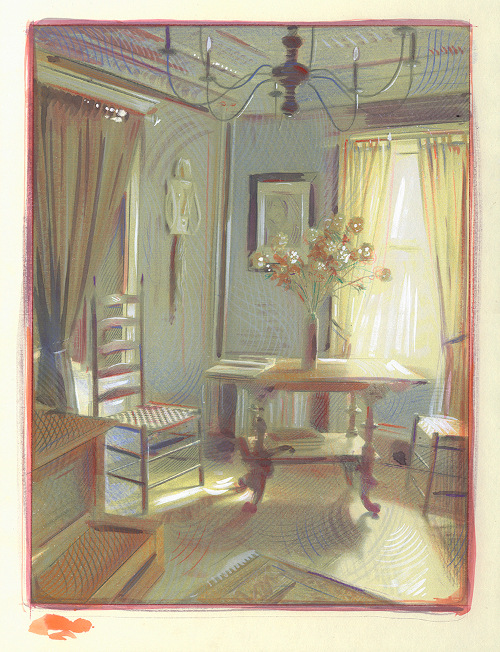

Among the many highlights of my five years at VCU is the development of the Education Abroad Program Florence Revealed: Drawing From The Wellspring Of Renaissance Thought And Vision. The program permits students to spend the entire month of June in the heart of Florence, Italy. Through daily life-drawing sessions conducted all’aperto (in the open), students immerse themselves in the cultural heritage of the city. Excursions to venerable landmark piazzas, churches, and museums provide students with the essential primary source material for their city-based sketchbook entries, while providing an art historical foundation to the program at large.

A second part of the program, titled Beyond the Walls of Florence, is dedicated to the creation of nature studies that range from (macro) views of the city itself to (micro) studies of Tuscan flora. Explorations of Florence’s surrounding hills (Fiesole, Bellosguardo, Piazzale Michelangelo, etc.) and visits to Florence’s fabled Boboli Gardens and the Orto Botanico (Botanical Garden) provide students with primary source material from which to create their nature-based sketchbook entries, while excursions to Siena, Pisa, and Venice serve to put the Quattrocento Fiorentino into the broader cultural context of its time.

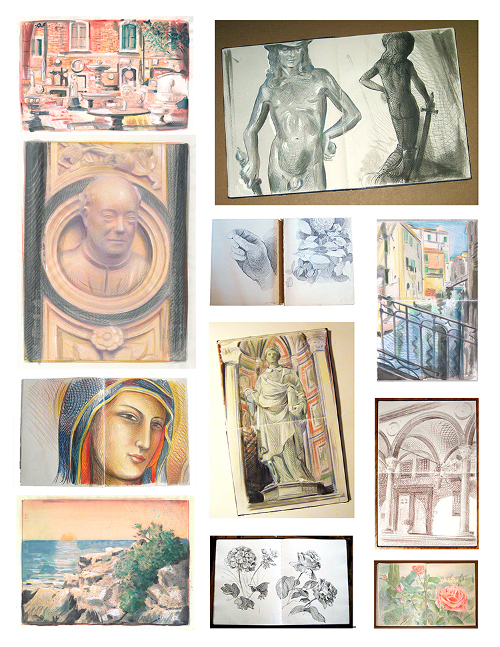
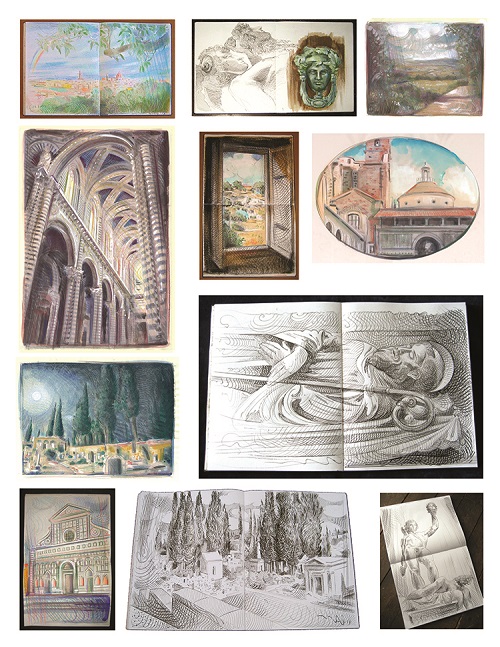
Through this program, students have the opportunity to learn about the masterpieces of the Florentine Renaissance by communing with them for extended periods of time. The richly illuminated journals that the students create throughout the month of June are a testament to the power of the sketchbook to chronicle the development of ideas through text, annotation, and drawing. The students’ response to the challenge of working in the proverbial field is a testament to their need to engage all their senses in conjunction with all their higher mental faculties in the creative process. The experience is an important one for them, for it teaches them to see themselves in the larger context of the history of art and to thus feel a sense of belonging to a larger whole. In so doing, they manage to transcend the limited range of the cultural and historical references of their generation. I make an effort to work alongside my students. Like them, I, too, return home with a visual diary chronicling the evolution of the course. My motto for the program: we came, we saw, we … drew!
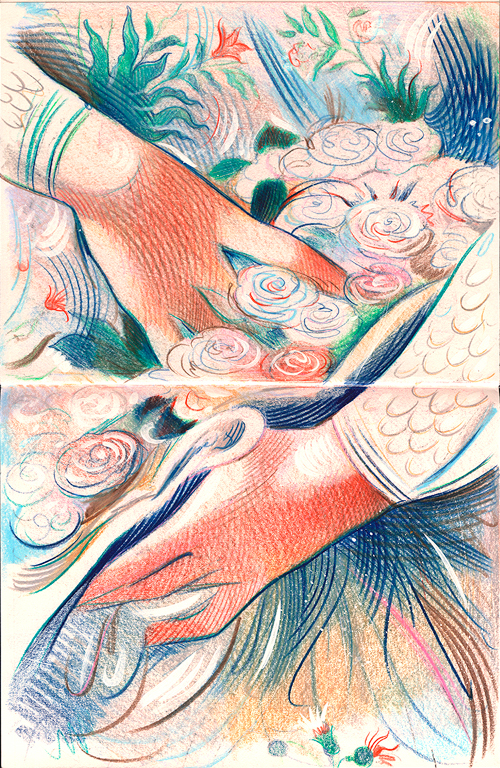
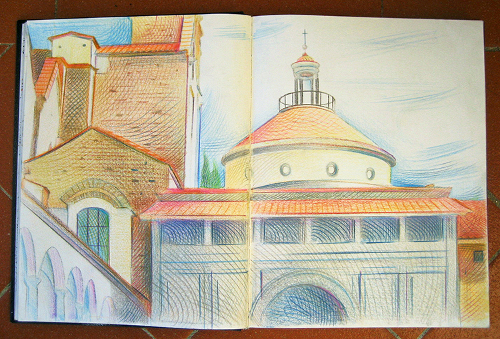
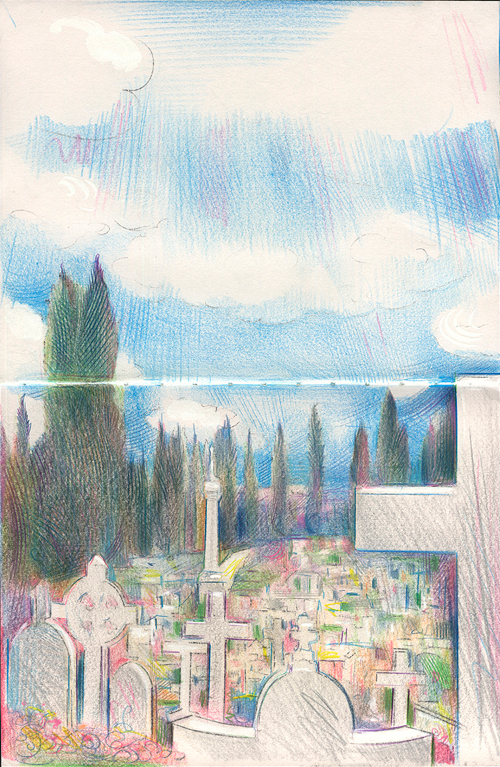
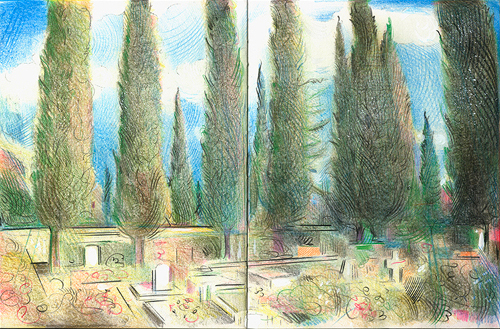

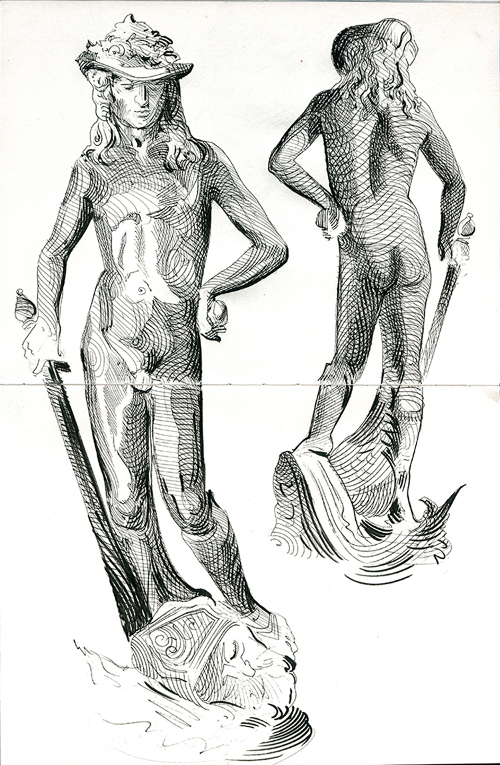

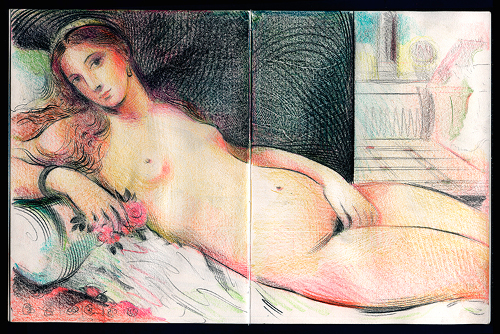
Stephen Alcorn; sketchbook entry

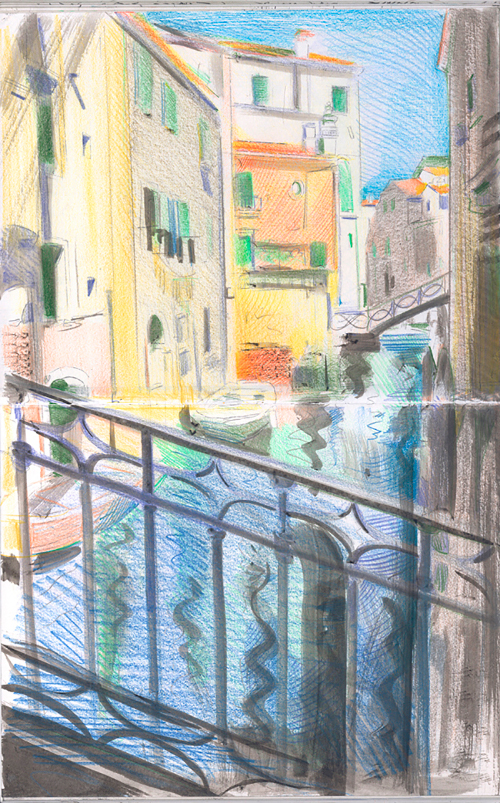
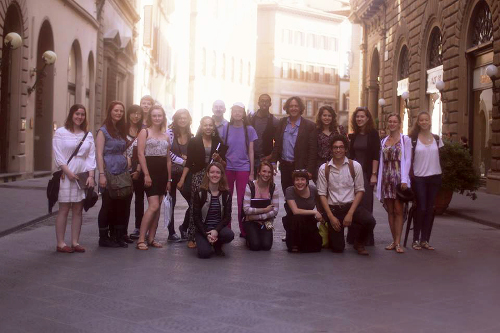
(Click to enlarge photo)
Another of the many highlights of my teaching experience at VCU has been the course in self-portraiture I introduced in the spring of 2011. It is an iterative studio course revolving around the single, central motif of the face as: 1) vehicle for formal and stylistic exploration and invention; 2) organ of sentiment; 3) revelatory icon.
Employing a variety of drawing media, students create a series of self-portraits, measuring 14 inches x 17 inches. Although conceived individually, each individual portrait belongs to a larger, sequential whole. We begin with exercises in direct, observational drawing, rooted in the beaux-arts tradition of (academic) draftsmanship. In turn, these lead to a wide variety of modes of representation including, but not limited to: contour drawing (modulated and continuous line), chiaroscuro (continuous tone and hatched), exercises in 2-dimensional design (with forays into the realms of analytic and synthetic cubism). Precise, purposeful references to the history of art are made on a daily basis and form an integral part of the course work. The course culminates with exercises in surrealism and magic realism.
In-class time is often dedicated to the practice of drawing one another. In fact, I have structured this practice in such a way as to ensure a daily rotation of the seating arrangement within the classroom (I position the drawing tables in such a way that permits students to face one another) so that by the end of the semester every student participating in the class will have drawn one another several times (this employing an equally varied range of media). I have found the social and philosophical implications of such a humanizing practice to be profound.

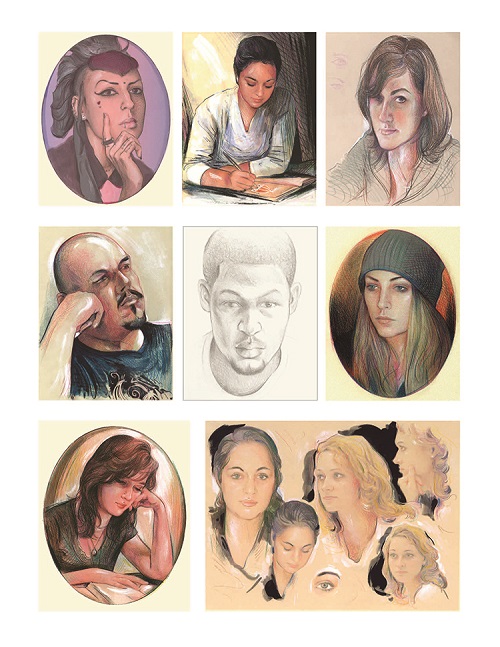
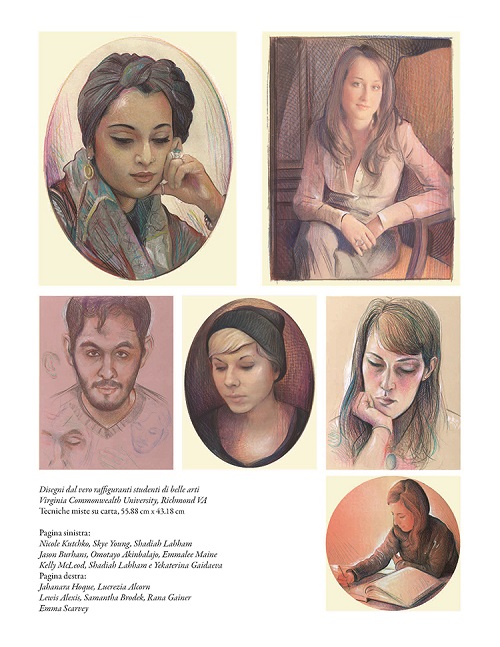
My practice of drawing portraits of students in the context of this course represents an ongoing implementation of a teaching methodology that encourages students not only to draw but also to be drawn. This practice has produced insights for individual students regarding their own construction of reality and the larger questions pertaining to human consciousness. Such insights into the potential for consciousness growth are the subject of my current pedagogical research, which I aim to have culminate in an article or perhaps book.
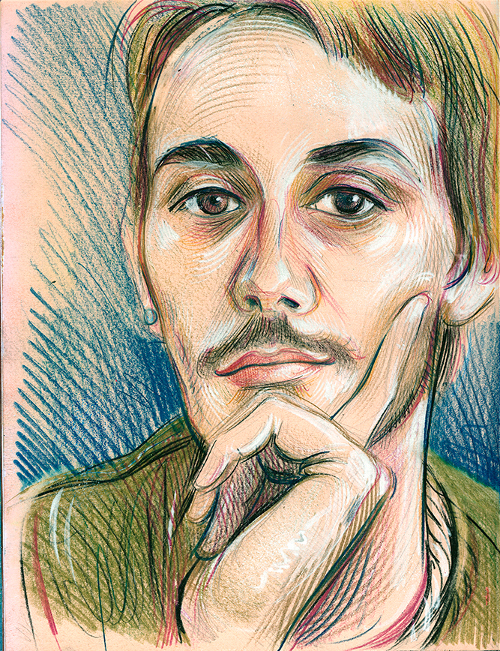
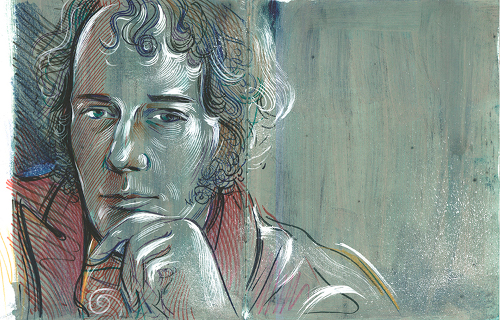
The dominant motif within my Daily Drawing series is my muse and fellow artist, Sabina. The series constitutes a systematic exploration of the formal and stylistic possibilities pertaining to the art of drawing and is the foundation upon which my course in portraiture is based. My studies of Sabina are executed in a wide range of media, including, but not limited to, graphite, pen and ink, pastel, and watercolor — and are of various dimensions ranging from 14.75 x 11 inches to 24 in. x 18 inches. Collectively, the studies constitute an intimate visual diary, one in which each page represents an homage to the principle inspiration in my life, as well as a stepping stone in what has been a lifelong journey and investigation into the complexities and mysteries of the drawing process.
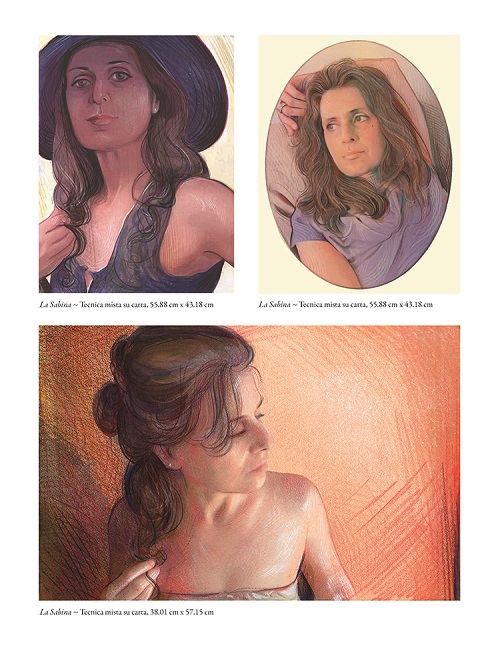
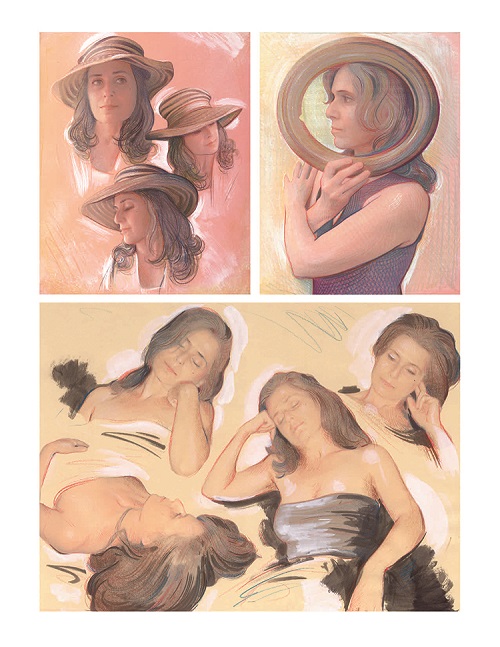
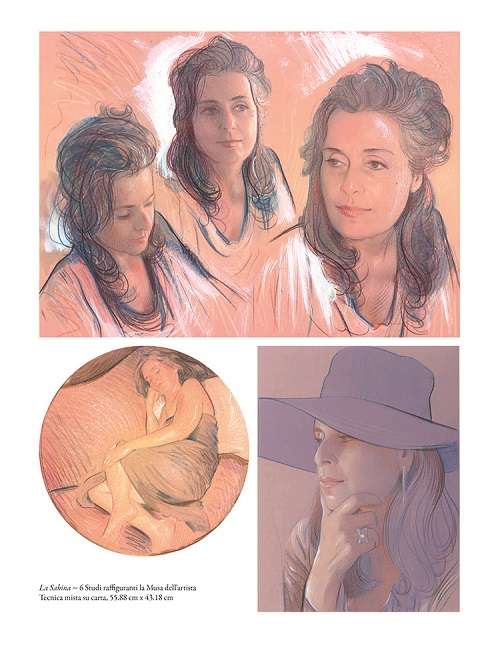

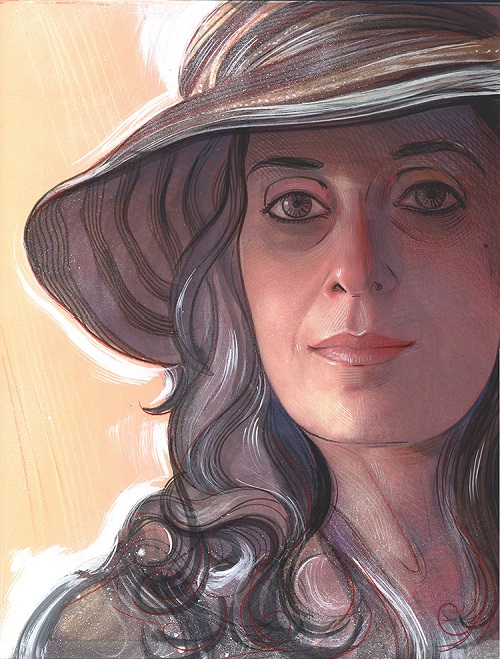
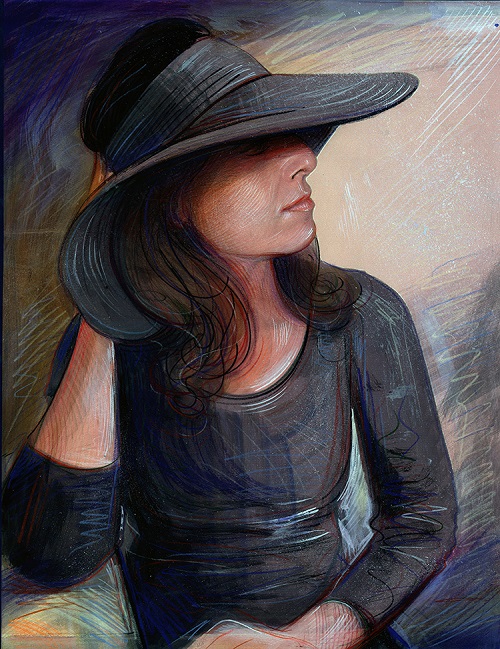
I cannot imagine a more exciting time in which to be an artist and an instructor. As a 21st-century artist, I rely on the most advanced digital technologies as tools that enhance my ability to be more human. These labor-saving devices grant me time to work by hand. In turn, those handmade drawings, prints and paintings can be scanned with a fidelity unknown to previous generations, and the results can then be disseminated to an increasingly larger audience. It permits me to design the books I conceive and to build and host a virtual gallery of my work that is accessible to every corner of the globe. But technology exists to serve humanity. Humanity does not exist to serve technology. Therefore, the power of the computer lies not in its ability to imitate human actions but in the facility with which it allows people to communicate fully as human beings. Paradoxically, digital technology enhances my humanity and allows me to revel in the universal, timeless, and irrepressible instinct to draw.

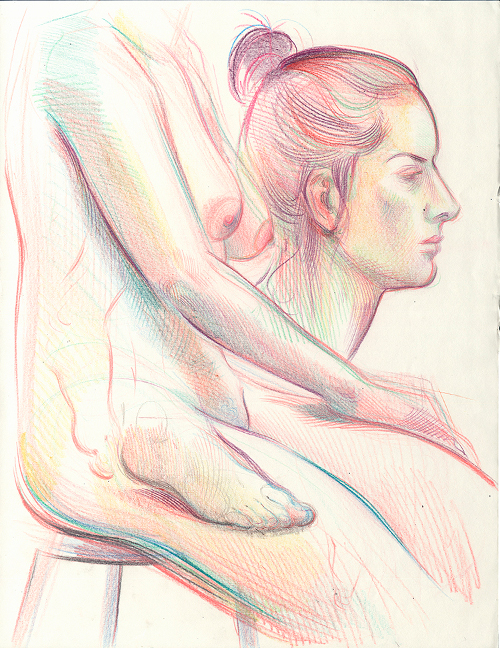
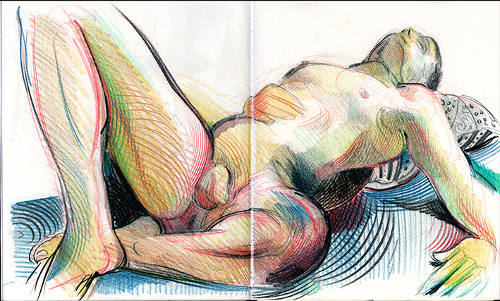


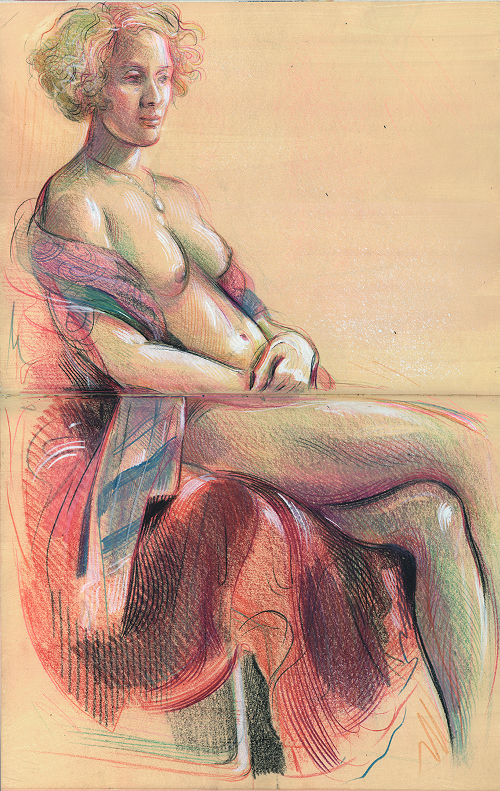
I believe in cultivating a plurality of skills, and indeed I encourage students to cultivate their graphic abilities both on paper surfaces and drawing tablets in the hope that the physical and the digital may stand side by side in their lives, like proverbial doors of perception that open onto a single, unified space — a realm of infinite possibilities, where there is a world waiting to be transformed through the timeless, persistent coordination of the draftsman’s eye, mind, and hand.
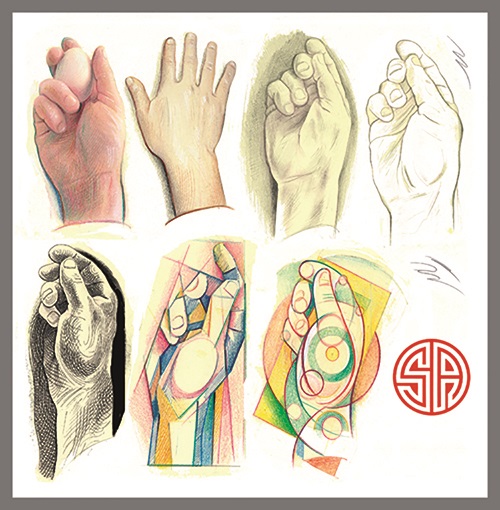
Throughout history, humans have responded to a profound need to translate the experience of life into marks, signs, and symbols onto an infinitely varied number surfaces, using an equally varied number of tools and materials, ranging from compressed charcoal on a cave wall to a rod of gold on specially coated parchment. The medium of drawing has chronicled the history of humankind — a rich and varied tapestry comprised of countless interwoven threads, each one bearing the mark of an individual in relation to a series of larger wholes. For the novice, the act of drawing can prove irresistible: give someone a pencil and a sheet of blank paper, and they will likely leave their “mark.” For the accomplished draftsman, drawing provides the satisfying experience not only of exercising a well-honed skill, but also of giving eloquent form to a vision. In both cases, the coordinated activity of the eye, mind, and hand leads to an engagement that unifies body and soul.

All images used by permission of Stephen Alcorn.

I love the idea that the haptic/tactile can help restore a certain mindfulness to our work. Alcorn’s students are quite lucky, I thin. Fascinating post – thanks!
Words and images wonderful and inspiring. Thank you!
Stephen, this was fascinating! I especially love the idea that ” we must first learn to read drawings, much the way we read a poem or a chapter in a book.” I am also excited about your new work in exploring consciousness through portraits and the idea of having your students value being drawn.
Amazing work. Thanks!